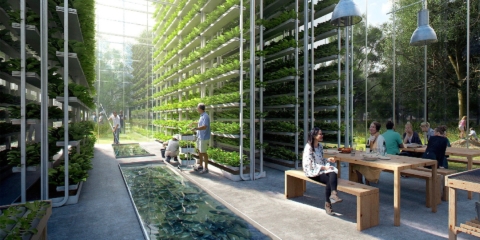Would you like to get notifications from Christian?
What if you could see through walls, fog, and human flesh? With this new holographic camera, you can! Scientists have created a camera that can reconstruct images of objects hidden from view. This powerful device could have a variety of applications, from security to medicine.
The potential applications for this technology are vast. In security, the camera could be used to detect hidden weapons or explosives. In medicine, the camera could be used to see inside the human body without having to perform invasive surgery. The possibilities are endless!
The camera relies on a light capture system called “synthetic wavelength holography.” This system scatters laser light onto hidden objects, then bounces it back to the camera. An AI reconstructs the signals to create an image of the hidden object.
This powerful camera could have a wide range of applications, from security to medicine. The potential implications are vast and fascinating. We can’t wait to see what scientists do with this fantastic new technology!
This breakthrough technology could change the way we see the world. Imagine seeing inside a human body and how organs work in real-time without visiting a hospital. We’re one step closer to that reality with this incredible holographic camera technology. Stay tuned for more amazing advances in science and technology!
What do you think about this news? Share your thoughts in the comments below!
Author: Christian Kromme
First Appeared On: Disruptive Inspiration Daily
Christian is a futurist and trendwatcher who speaks about the impact of exponential technologies like AI on organizations, people, and talents. Christian tailors his presentations to your audience’s specific industries and needs.




Embracing the advancements of technology and AI can enhance our humanity. We can focus on developing our unique talents and skills by automating mundane tasks and freeing up our time. As humans, we can adapt and learn, allowing us to evolve and stay relevant in a rapidly changing world constantly.


Organizations will need to be more fluid, dynamic, and adaptable: the ability to change and adjust in response to new situations and environments. We are on the cusp of a new era of organizations, ones that are more fluid and agile and which behave like swarms we see in nature.




In the future, 3D printing and generative design will allow for products to be designed in a more decentralized manner, and production will take place closer to the customer and fully on-demand. 3D printing technology will also allow for more customization and personalization of products.


The agricultural industry is ripe for disruption. Robotics, AI, and IoT are all technologies that have the potential to radically transform the way we grow food. In combination with vertical farming, these technologies could increase the efficiency and quality of agricultural products.

A human-centered society is one that puts people first and where technology is used to unite and empower people. It is a society that values biological life and dignity above all else. It is a society that recognizes the importance of human relationships and works to strengthen them. In a human-centered society, all members of the community are valued and treated with respect.


The future of healthcare is here. New technologies like AI, IoT, big data, and smart sensors make it possible to become the CEO of your own health. Imagine that your phone can listen to your voice and AI algorithms can detect small nuances in the tone of your voice that indicate specific diseases.
